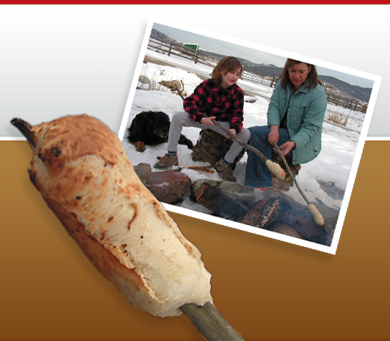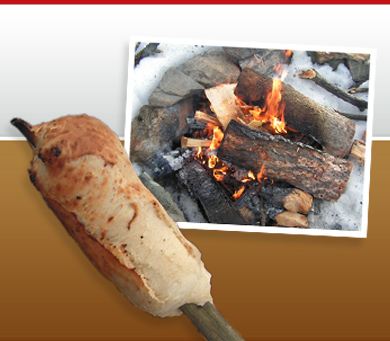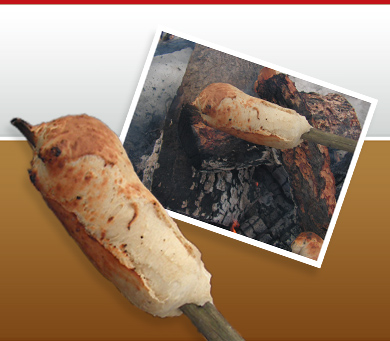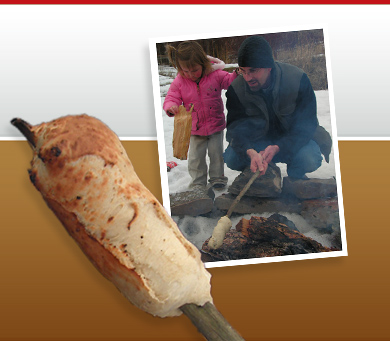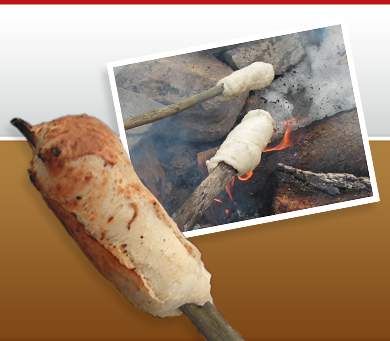
What Sticks Do I Use?
When choosing your stickbread sticks, keep in mind that not all wood is safe.
Do not use pressure treated lumber. It may contain arsenic or other highly toxic substances. Do not cook your bread over a fire containing pressure treated lumber, the toxins can contaminate your bread. If you find lumber, you may not know what contacted it. If you left lumber in a shed used by several people and haven’t been there for a year, how do you know what may have spilled? What kind of dust settled? Be on the safe side and just use natural branches for stickbread.
Safe trees to cut stickbread sticks from include:
Acacia, Apple, Almond, Ash, Aspen, Bamboo, Beech, most Citrus, Cottonwood, Crabapple, Date, Dogwood, Elm, Fig, Gingko, Grape Palm, Guava, Hibiscus, Hickory, Mulberry, Hazelnut, Oak, Pear, Pecan, Poplar, Spruce, Sycamore, and Willow.
Pine wood is generally safe to use, but not recommended. Pine sap can strongly affect the flavor of your bread. Larch or Tamarac falls into the same category. It is safe, but since it is a conifer, it may negatively affect the taste of your bread.
Birch is safe to use, but contains low concentrations of salicylates, which could possibly be an issue if you are sensitive to aspirin.
Cherry wood may contain some toxins in the bark. If you use cherry, be sure to completely remove the bark.
Maple is safe to use, but there is evidence that red maple bark may contain a fungus that can cause a reaction in some people. Be sure to remove all of the bark.
Driftwood is not recommended for a few reasons:
1. It is hard to identify what kind of tree the wood came from.
2. The ocean water environment contains lots of organisms not to mention every kind of animal waste in addition to residue from ships.
3. Driftwood can have high salt content.
Branches from the following trees should not be used as they may contain substances toxic to human beings:
Alder, Angel's Trumpet, Apricot, Avocado, Azalea, Box Elder, Boxwood, Buckthorn, Cacao, Cedar, Elderberry, Flame Tree, Heaths, Hemlock, Holly, Honey Locust, Horse Chestnut, Huckleberry, Juniper, Laurel, Lupine, Mango, Mexican Breadfruit, Myrtle, Nectarine, Nutmeg, Mistletoe, Oleander, Peach, Plum, Redwood, Sand Box Tree, Solanum, Sophora, Sumac, Umbrella Tree, Walnut, Ficus, White Cedar, Witch Hazel, Wisteria, Yew.
(This list is not complete, if you are not sure about a plant, err on the side of safety and don't use it).

